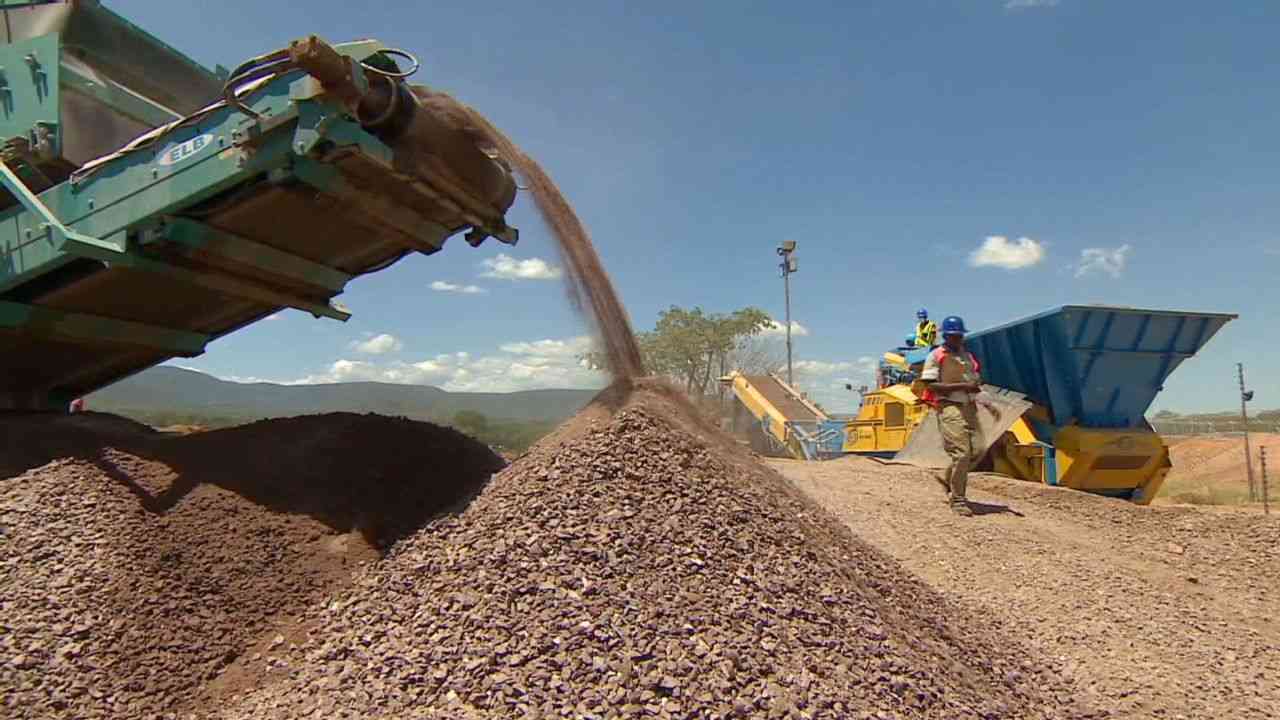
ZIMBABWE is endowed with most critical resources needed in the production of steel.
It has iron ore, coal, limestone, nickel, chrome, and other key resources such as hydrogen, which Sable Chemicals has the expertise to produce.
Zisco Steel located in Redcliff used to be a major producer (of steel) before its demise, due to mismanagement and “Western” sanctions. At its peak, the company used to produce 1,2 million tonnes of steel, employing 8 000 locals.
For perspective, South Africa's largest steel plant (owned by Arcelor Mittal SA) currently has a capacity of producing 1,7 million tonnes per year.
Considering that Zisco dropped from its peak production in the early 2000s shows that it was an actual behemoth (major operation) in its prime years.
Efforts are currently underway to resuscitate the company, with reports from 2023 indicating that the government through its Kuvimba Mining House is targeting to mine and sell iron ore and limestone owned by Zisco, for the financing of the revamping of the company (Zisco).
There is also Dinson Iron Steel (Disco), owned by the world's largest stainless steel producer Tsingshan (of China), which has set up an ambitious steel manufacturing project in Mvuma.
Disco aims to develop and expand its operations in four phases. At the peak of the first phase, it will be producing 600 000 tonnes of steel per year.
- Power crisis hits Proplastics factory
- Women urged to take advantage of Women’s Bank
- Half of Zim youths loafing: ZimStat
- Mutare creatives shine at ZNCC awards
Keep Reading
However, upon the full implementation of the fifth phase, it plans to produce a record five million tonnes per year. This would make it the largest steel plant in Africa. The company will be an integrated iron and steel firm.
This means that it will be mining Zimbabwean iron ore, chrome, coal and other minerals on territories on which it has mining rights, and then use the same resources to manufacture steel and other products at its own production plants.
Available reports indicate that the company has also applied for Special Economic Zone status, meaning that it might forfeit the payment of corporate taxes for the first five years of its operations, or longer, depending on the agreement reached with government.
That is not necessarily a bad thing, especially if there are good negotiators on the Zimbabwean government side of that agreement. Of course, if there are poor or dishonest negotiators, the country would get a heart-breaking deal.
With such a background, this column (article) seeks to describe what needs to be done In order for the country to realise tangible benefits from its steel industries and resources, whilst also solidifying its place as a continental or global player in the manufacturing of steel and steel products.
What needs to be done
It is essential to recognise that most foreign industries, which dominate the global steel market (with the largest exports, globally) have extremely huge production runs, which enable them to produce at lower costs as they benefit from economies-of-scale.
These production runs are facilitated by their large domestic markets, which constitute huge populations and high disposable incomes. That means, they can produce their products at lower prices, more effectively and also afford to spend more towards research and development (innovation).
For Zimbabwe as a steel producer, this necessitates the need for existing local steel manufacturers to consolidate (collaborate) through the sharing of production facilities, cooperation around raw materials (iron ore, chrome, coal, etc) and research and development (innovation) budgets, among other things.
Local steel producers should also be permitted to collaborate with suppliers of other key products and services used in their industries such as oxygen, hydrogen, railway, etc.
Making such an emphasis is essential, since local laws (competition laws) do not permit businesses to be structured and to collaborate in such a manner.
However, if Zimbabwe is going to have a manufacturing sector which can compete against the huge industries of the United States of America (USA), China, Europe, Brazil and so forth, it should be willing to permit its industries (including steel manufacturing) to cooperate and collaborate.
The collaboration can increase the size of production runs, drive costs down and enable local industries to be the most efficient, globally. With that, local industries will eventually be able to compete with foreign firms on price, innovation and quality.
Additionally, a consolidated industry which has a few large producers instead of plenty manufacturers of different sizes, is easier to regulate, monitor and produces more tax revenue for government.
This is why it is advisable for Disco to be supported in all its efforts to get complimentary industries to collaborate with it. That should also be the same for Zisco.
Its cooperation with Disco cannot be ruled out and must in fact be supported. Without that, Zisco may not recover and its assets could only be ultimately acquired by Disco or another major international steel producer with strong capital (wealth).
A collaboration between Disco and Zisco would potentially place Zimbabwe's steel among the most competitive, globally, in terms of both price and quality.
In that regard, the Competition and Tariff Commission needs to be made aware of the need for local industries across all sectors of the economy, to consolidate.
Current competition laws do not promote the growth of the country’s industries, job creation or the economy. After consolidation, local firms should only ensure that they provide their goods and services at lower prices than before, employ more labour, increase exports and maintain their prices to be lower than competitive imports from prominent manufacturing countries. Cross-border consolidation with South Africa's steel industries can also be attempted.
A huge steel industry along with expansive mineral resources, require that Zimbabwe urgently accelerates the expansion of its capacities in power generation (electricity), railway, water resources and the size of its key national borders.
Mining (including iron ore extraction) on its own is an energy-intensive industry. Currently, local mining companies have already applied for an extra 1800 MW of electricity (equal to the country's current total national grid supplies), which they need in order to extract more minerals, employ more locals and earn export proceeds.
Beneficiation industries such as Disco, Zisco and chrome smelters, also use massive amounts of energy. In this regard, it is advisable for the country to expand electricity generation capacity in coal, gas (from Invictus Energy oil fields), hydrogen (from Sable Chemicals), etc.
Renewable energy projects should also not take priority over fossil fuels. Rather, they should both be built concurrently, with the country only retiring fossil-fuel-powered electricity stations, when there is enough renewable capacity online (connected to the national grid).
A rough estimation suggests that the country needs around 10 000 MW of capacity, for it to reasonably industrialise and become a top economy of regional (African) standards. This is against a current generation capacity of only 1800 MW on the national electricity grid.
Zimbabwe currently imports a huge US$1 billion of steel each year. Such imports are contributing to the depreciation of the local currency (ZiG) since they make “ZiG” less desirable for local economic participants such as the importers.
However, the presence of Disco and revival of Zisco can go a long way to reduce these imports. In order to support the local steel producers, laws may oblige all government ministries, agencies, state-owned institutions, and municipal (local government) entities to strictly use local steel for their projects, unless it is not compatible.
In South Africa, for example, there is the Public Preferential Procurement Framework (PPPF), which mandates all government institutions to purchase locally-produced steel products, instead of imports.
This should, however, be on condition that, the local products are affordable and of reasonable quality. Local steel producers may also capacitate the Auditor-General's office to ensure that it monitors the compliance of government institutions to these regulations (of purchasing local steel products).
The capacitation may be through the funding of salaries of additional auditors, etc. Considering that the government is responsible for the construction of bridges, dams, rail roads, power stations, water reticulation pipes, gas pipelines, airports, buildings, houses and much more, PPPF regulations (as stated above) will ensure that steel producers will greatly benefit from national infrastructure projects.
Ineffective indigenisation laws also need to be abolished. A number of key sectors within the economy, provide enough proof that such laws slow down new investments.
Rather, indigenisation policies should be a matter of good faith, whereby the government encourages businesses to support black entrepreneurs, who are competitive or who have the potential to flourish, out of their own goodwill.
If implemented merely in good faith, the policy could motivate black entrepreneurs to be more competitive and innovative. If the government is determined to implement the economic transformation (upliftment) of the black population, it can alternatively decide to purchase shareholding of between 10%-49% (no more than that) in successful steel and other companies.
It will then use the proceeds earned from its investments to fund welfare programmes for black Zimbabweans, which may include direct corporate welfare (cash gifts or loans) for black-owned companies.
Acquiring more than 49% in aforementioned large steel companies may result in government controlling them, which may lead to corporate governance issues since government-owned companies are at times associated with corruption, etc.
It is also possible for the government to negotiate for technology transfers, which will enable locals to also have the skills to launch the same industrial operations from scratch (including building the required equipment).
This can be effected through direct technology transfers (provision of know-how) from foreign companies or through joint ventures (constituting 50/50 shared capital investment) with foreign companies.
Local managers can then utilise the JV opportunity to gain intricate knowledge of how the foreign company’s operations work. Such knowledge will be essential if Zimbabwe is going to be an advanced (internationally superior) economy.
Apart from the preferential purchase of local steel products by government institutions (through PPPF), the private sector should also be mobilised to support the local steel industry.
The Zimbabwe National Chamber of Commerce (ZNCC), Confederation of Zimbabwe Industries (CZI) and other private sector industry bodies should emphasise the importance of such support, to their members.
Engineers from the government's department of public works (and others) may be mandated to ensure that the steel requirements of huge private sector projects can be satisfied by locally-produced steel.
That also means that, huge projects, which involve major construction activities would need to be approved by government engineers, who will need to ensure that the projects use locally-made steel products, as much as possible.
Agility (speed) will obviously be a key requirement, as complex approval processes can potentially slow down or turn away new investment in the country.
Also, the government should directly invite internationally-recognised downstream industries, which will provide employment for locals whilst taking advantage of the domestic steel producers’ competitively-priced steel.
These downstream industries may include; vehicle manufacturers, makers of electric pumps (of all sizes), designers of large-scale hydroelectricity turbines, generators, wind turbines, water desalination plants, etc.
Products manufactured by the downstream industries would also be export-focused, especially if they are made by major companies of international repute.
- Tutani is a political economy analyst. — [email protected]











